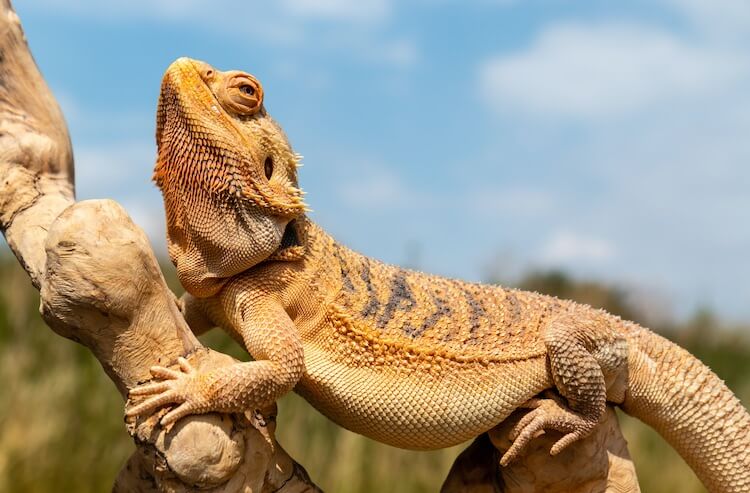why do bearded dragons bob their heads
Video Why do bearded dragons bob their headsBearded dragons have over 10 unique behaviors. Some of the most common you are likely to see include head bobbing, glass surfing and waving.It is not always easy to understand their wide range of behaviors and what they mean.Reading: why do bearded dragons bob their headsSome behaviors mean they are stressed or have health problems whilst others indicate aggression.As a bearded dragon keeper it is important to know what each behavior means. It is also helpful to know which are normal and which are not.If you want to learn about the ten most common bearded dragon behaviors and why they show these behaviors, then keep reading…
Ten Common Bearded Dragon Behaviors
Contents
When kept as pets Bearded dragons will show many different behaviors. Some are natural and are fun to watch. Others are rare and may be an indication of stress or illness. The important thing is to know what each behavior means and if you need to do anything.
1. Bearded Dragon Head Bobbing
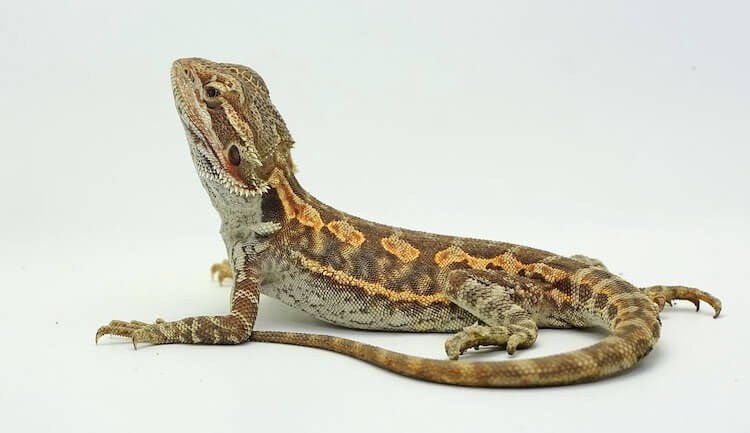
2. Bearded Dragon Glass Surfing
Glass surfing happens when a bearded dragon tries to climb the glass in their enclosure. This behavior is not seen in the wild because beardies do not naturally encounter glass.A bearded dragon with a darker beard will glass surf when stressed.Normally the main cause of stress is their environment. It is common for first time keepers to make a mistake when setting up their tank. Some common examples include:
- Using a cage that is too small.
- Inadequate UVB lighting.
- Keeping more than one in an enclosure.
Glass surfing is a behavior that normally means stress.This is not a natural behavior and you will need to pinpoint the cause of stress.Using a larger enclosure and the correct lighting is very easy. If two beardies are sharing an enclosure then consider keeping them in separate tanks.
3. Bearded Dragon Digging
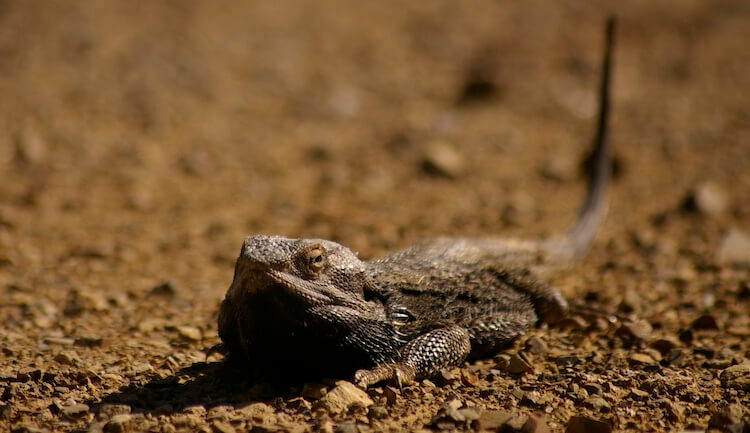
- Preparing to lay eggs.
- Stress.
- Looking for food.
- Not enough space.
- Preparing for brumation.
Gravid females will dig frantically in preparation to lay eggs.Some individuals will dig because they are stressed. They are trying to hide or escape. Stress can be a result of incorrect lighting levels, heating, humidity and loud noises.If your bearded dragon is not stressed but continues to dig, they may be underfed and are looking for food. Adult bearded dragons should weigh 380 to 510 grams. Monitor their diet closely to make sure they are receiving the right amount of food and nutrients.You should only rule out underfeeding as the reason behind digging if they are a healthy weight.Not having enough space to roam around can also result in boredom and digging.Finally, bearded dragons dig to prepare for brumation. Brumation is a type of hibernation where beardies eat less and only drink water occasionally. Before brumation they will dig to find a safe and comfortable space to sleep. This space also helps to regulate their temperatures while they are hibernating. Brumation normally happens in the fall as light changes and temperatures drop.
4. Why Do Bearded Dragons Open Their Mouth?
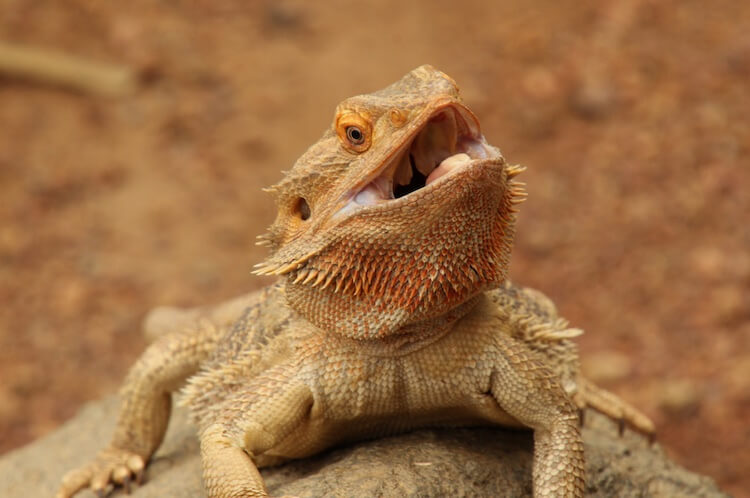
5. Eye Bulging
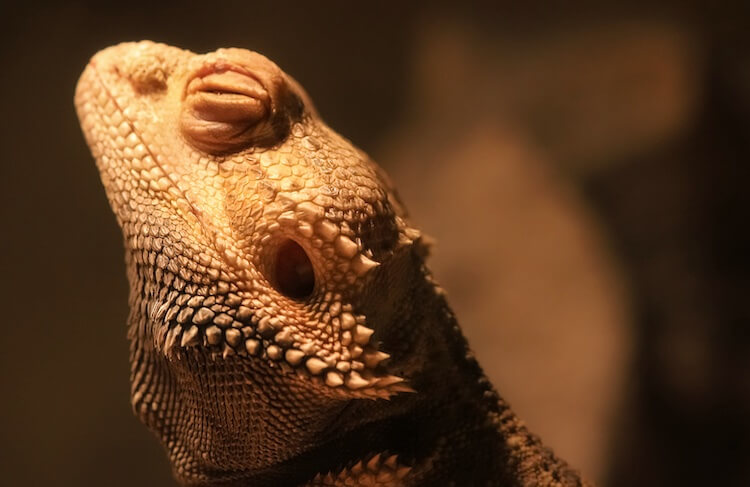
6. Bearded Dragon Arm Waving
Arm waving is known to be a form of submissive behavior. This behavior is common for hatchlings or juveniles and is less common in adults.During their juvenile phase a social hierarchy based on feeding and aggression develops. Some species will become aggressive and dominant. Others are shier and more submissive.Submissive bearded dragons will wave their arms towards more dominant individuals.If you have two juveniles in the same enclosure it is not uncommon to the more submissive bearded dragon arm waving. They are trying to show they do not pose a threat. If you house multiple species together, and notice this behavior, then try giving them their own cage.After their juvenile stage (over eight months old) you will find they do not wave their arms as much – especially males.Bearded dragons in the wild also wave.They normally wave their arms to show they have seen a predator or another bearded dragon species.Arm waving helps to reduce the chance of them being attacked by a predator. This is because some of their predators (e.g. big cats) rely on ambushing as their main form of attack. Beardies showing predators they are aware of their presence takes away the ambush.Though arm waving may seem like a friendly gesture, it is not.
7. Why Do Bearded Dragons Go Black?
Bearded dragons turn their beards’ black for many different reasons. The most common include when they feel threatened or stressed, want to breed or are sick. Males and females can turn their beards black, but it is more common in males.This behavior is not a good sign for pet species.It is important you understand why your bearded dragon has turned its beard black.Your bearded dragon will turn it black when they feel threatened by a predator. A black beard paired with head bobbing is a sign of aggression.A black beard can mean your reptile is ill.If your beardie is ill, a black beard will be paired with other signs of illness such as lethargy, loss of appetite and swelling around the mouth.Finally, if your bearded dragon wants to start breeding they may turn their beard black. This behavior is more common in wild species.
8. Why Do Bearded Dragons Flare Their Beard?
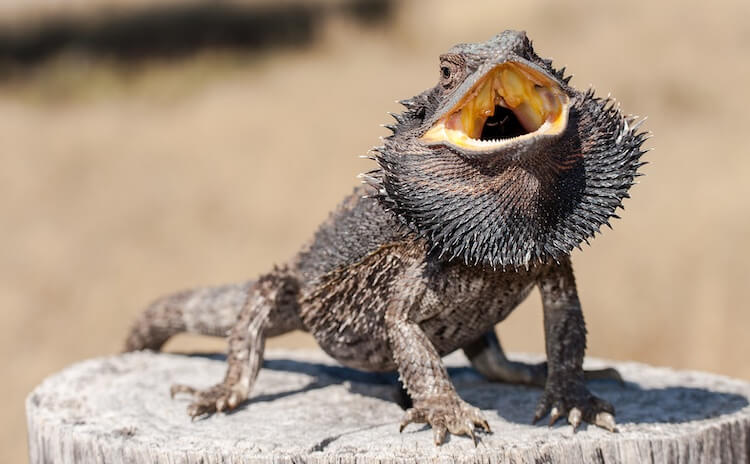
9. Tail Twitching
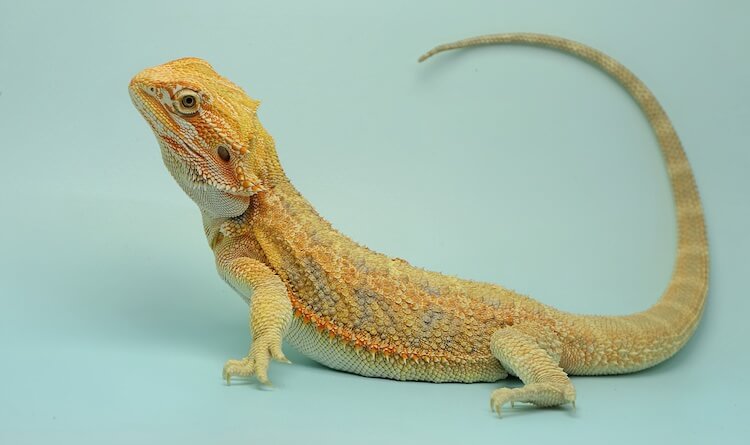
10. Hissing and Stamping
When provoked or threatened a bearded dragon will show signs of aggression.Bearded dragons hiss if they feel threatened or scared.In the wild they hiss at predators to make themselves seem more threatening.If your beardie hisses at you, then stop what you are doing. Hissing is a sign of aggression and is a behavior that prefaces biting.It is normal for bearded dragons to hiss when they do not want to be disturbed. Normally this will be when they are shedding as it is uncomfortable for them.Making your pet feel calm, unprovoked and safe will stop them hissing.Many people also confuse stamping as a sign of aggression. However, males who are interested in females will stamp their feet on the ground. This is a natural behavior.
Bearded Dragon Behaviors Explained
Mating
Before mating bearded dragons will bob their heads. Their beard may go black too.A black beard can show that a beardie is ready to mate. But, keep in mind that it can also mean they are stressed; this can be determined by the other behaviors that will follow if feeling threatened or ill.Males head bob to initiate courtship and will continue this behavior during mating to show their dominance. Females accept a male’s gesture by head bobbing.
Shedding
When a bearded dragon sheds they will fluff, eye bulge and twitch their tails. All of these behaviors are done to make shedding easier:
- Eye bulging will help a beardie loosen the skin around its eyes.
- Beard fluffing helps to loosen the skin around the neck.
Keep in mind that shedding is uncomfortable.It is important not to disturb them during this time. Avoid any handling and interactions. If you attempt to handle it is likely your beardie will twitch their tail and hiss.
Aggression
To show aggression bearded dragons will head bob, hiss, stamp and puff their beards.Beardies in the wild hiss, stamp and fluff their beards to make themselves look bigger and more menacing. These behaviors help to ward off predators and keep them safe.If they feel very threatened it is possible they will show all these behaviors.It is always best to house bearded dragons alone. Keeping two individuals together can result in extreme aggressive and submissive behaviors.When meeting new people they are more likely to head bob and fluff their beard.
Summary
Behavior Explanation Arm Waving Submissive behavior that is common in hatchlings and juveniles. Head Bobbing Used to initiate courtship and during mating or as a sign of aggression. Glass Surfing A sign of stress that is not seen in wild species. Black Beard Stress behavior when feeling threatened or ill. Digging A very common behavior when looking for food or preparing for brumation. Fluffing Used as a defense technique to protect their territory. Gaping Is used as a way of cooling down in the wild. Tail Twitching Normal when hunting but can be caused by metabolic bone disease. Eye Bulge This is a normal behavior and helps them to shed. Hiss or Stamp Bearded dragons hiss if they feel threatened or scared.Over the lifespan of your bearded dragon it is likely you will see at-least half of these behaviors.Some of the most common behaviors include head bobbing, glass surfing and waving.It is important you understand what each of these behaviors means as some can indicate stress or illness.Have you seen your beardie wave or bulge their eyes before? How about gape or fluff their beards?Let us know in the comments below.Read more: Why Is My Steak Tough and Chewy? | Top Q&A
Last, Wallx.net sent you details about the topic “why do bearded dragons bob their heads❤️️”.Hope with useful information that the article “why do bearded dragons bob their heads” It will help readers to be more interested in “why do bearded dragons bob their heads [ ❤️️❤️️ ]”.
Posts “why do bearded dragons bob their heads” posted by on 2021-08-30 00:49:06. Thank you for reading the article at wallx.net
